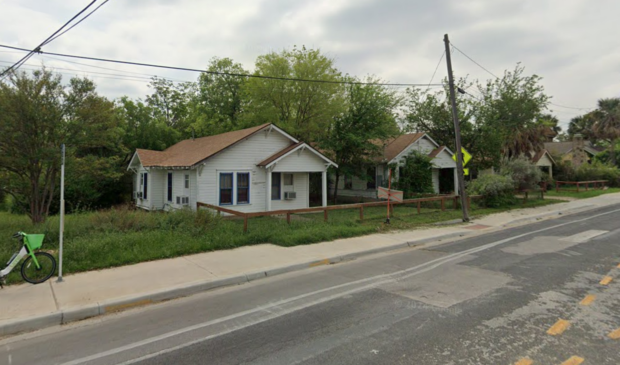Planning Commission bucks opposition to recommend DB90 for Red River plots
Thursday, February 20, 2025 by
Miles Wall The Planning Commission voted 9-0-1, with Commissioner Grayson Cox abstaining, to recommend a proposal from a landowner to rezone three addresses on Red River Street in the Hancock neighborhood that was widely panned by neighbors at a public meeting on Feb. 11.
The recommended rezoning would change the three properties at 4305, 4307 and 4309 Red River St. between 43rd and 44th streets from SF-3, or Single Family-3, to LR-MU-DB90-CO-NP, or Neighborhood Commercial-Mixed Use-Density Bonus 90-Conditional Overlay-Neighborhood Plan.
Hancock residents at the meeting denounced the inclusion of DB90 in the proposed rezoning, citing the difference between the 70-foot height limit allowed by DB90 and the current neighborhood standard of 25 feet or shorter, as well as its potential to cause traffic and parking issues.
Andrew Schultz, one of roughly a half-dozen self-identified Hancock residents who spoke against the proposal during public comment, described a potential 70-foot building in the neighborhood as “an abomination” and said that a DB90-enabled development would make Red River more dangerous.
“When I pull onto Red River from 44th Street, it’s often hard to do so safely because you have a limited sight distance south and you have all this activity of buses, bicyclists, pedestrians – not to mention scooters,” Schultz said. “It’s already a dangerous spot, and adding more residential density on this block along with more commercial activity would only make the problem worse.”
The DB90 district type, introduced in early 2024 to replace the short-lived VMU-2 district type, is intended for mixed-use, higher-density development in transitional areas, and has been at the center of several rezoning cases reported on by the Austin Monitor.
In accepting the applicant’s proposal including DB90, the Planning Commission rejected an alternative proposal recommended by Planning Department staff of LR-MU-V-CO-NP, which would replace the DB90 with a V, or Vertical Mixed-Use combining district.
In their review sheet on the case, staff said the proposed DB90 zoning “does not promote compatibility with adjacent and nearby uses” and noted that the area is “low-slung.” Their proposed alternative of V, or Vertical Mixed-Use, would impose a lower limit of 40 feet.
Victoria Haase of development consulting firm Thrower Design, speaking as an agent on behalf of the owner at the meeting, argued that staff’s recommendation would make higher-density development effectively impossible.
Referencing a table comparing the current and proposed zonings, she pointed to a requirement included in MU-V zoning to include affordable units, which she said could not be subsidized by market-rate units with the total number possible in a sub-40-foot development.
“There are only about 40 parcels that have a combination of LR and V, and none of them have developed under the V program,” Haase said. “So this is not a viable option for this property.”
Haase said in response to the criticism from neighbors that the rezoning and redevelopment of the properties would likely involve the developer agreeing to vacate right-of-way to the city on part of the plot to allow for the road and sidewalk to be expanded, which she argued would alleviate traffic and safety issues.
Before the vote, Cox and Commissioner Greg Anderson offered diverging soliloquies on the implications of the case for development in Austin.
Cox, the lone abstaining vote on the motion, spoke against what he characterized as an attitude on the commission that the only priority is “yield, yield, yield.”
“If yield in units is the only thing that matters, why even have zoning?” Cox asked. “I feel like a large chunk of the Austin citizenry, including those evil people who live in single-family homes, just don’t have a voice on this commission. Or at least won’t in the near future.”
Anderson said he lives in the same kind of building earlier described as an “abomination,” and said that opposition to housing projects was always going to be more vocal than support simply because the neighbors who would benefit aren’t neighbors yet.
“That’s the reason we haven’t heard from anyone who’s gonna live in this building,” Anderson said. “Because they don’t know they’re going to live in this building.”
The Austin Monitor’s work is made possible by donations from the community. Though our reporting covers donors from time to time, we are careful to keep business and editorial efforts separate while maintaining transparency. A complete list of donors is available here, and our code of ethics is explained here.
You're a community leader
And we’re honored you look to us for serious, in-depth news. You know a strong community needs local and dedicated watchdog reporting. We’re here for you and that won’t change. Now will you take the powerful next step and support our nonprofit news organization?



